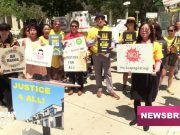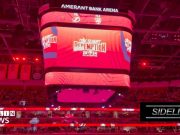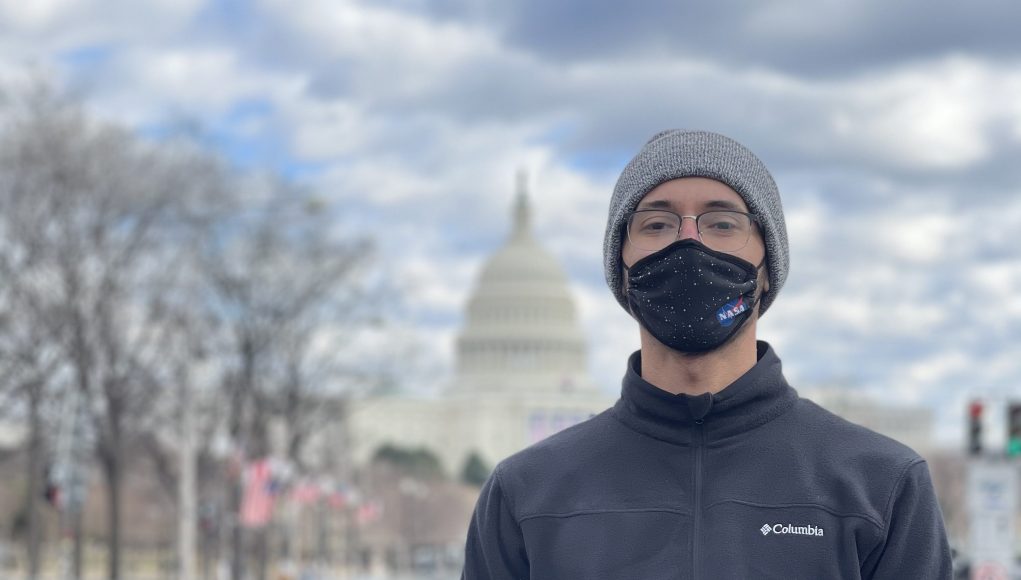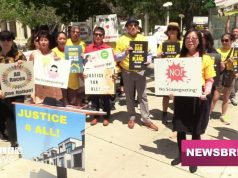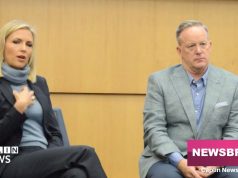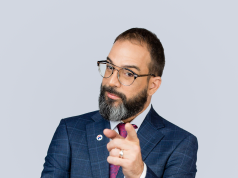Some people may believe that moving from Miami to Washington, D.C. the weekend before Wednesday’s inauguration of the 46th president, Joe Biden, was ill-timed. After all, security was tight following the January 6 riot on Capitol Hill. There were barricades, checkpoints and thousands of National Guard soldiers around the city. Violence was possible – or maybe even expected.
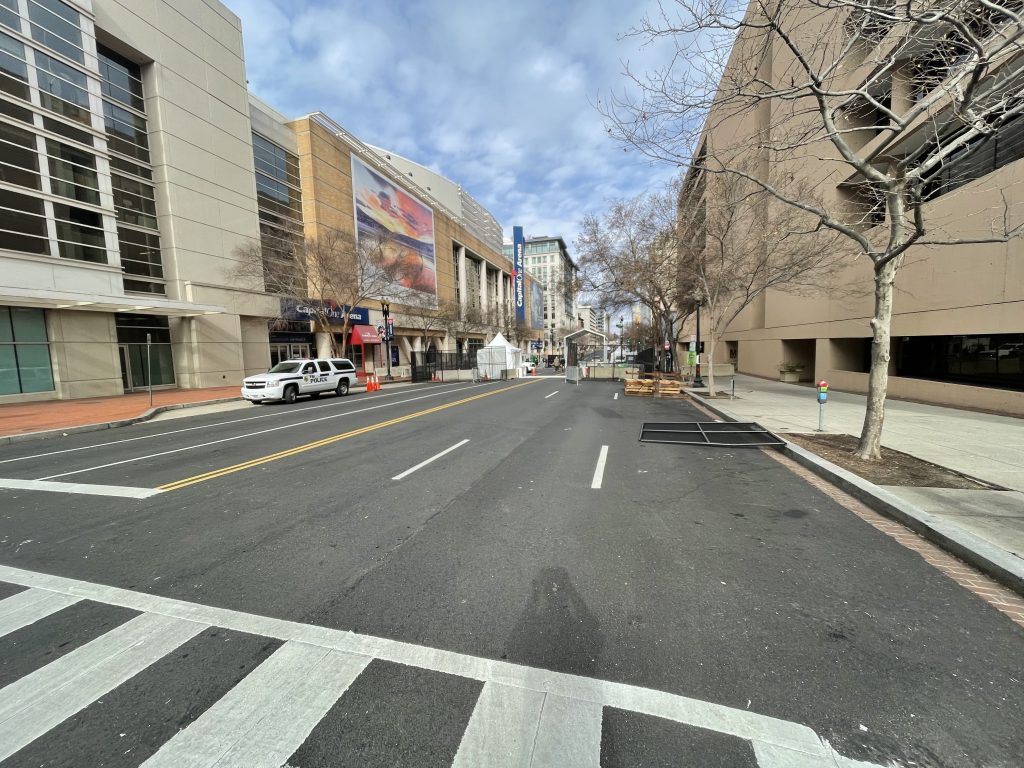
11:36 AM – Sunday (Penn Quarter) First checkpoint reached.
The first sight of a checkpoint after walking past a few military personnel and vehicles. On Sunday afternoon, the security at Penn Quarter was not as harsh but security asked me to “State your business” before allowing me to pass.
12:15 PM – Sunday (Federal Triangle) Fenced barricades reached
Walking near the Capitol on Federal Triangle, I found workers building fences and barricades to prepare for the Presidential inauguration. Signs posted on a light post informed of closures and no-parking zones with the dates D.C. residents could expect no access to this district. At the top of federal buildings soldiers, secret service agents and Metro police put up black nets and overlooked the area. Bus stops had the FBI message. And there were images of the individuals who stormed the Capitol.
1:00 PM – Sunday (Judiciary Square) Passing Secret Service checkpoint on way to Capitol Hill
On Sunday afternoon the Secret Service set up another checkpoint. This stop was more difficult to pass. Visitors were asked not only to state their business but there was a large sign similar to a TSA line of items prohibited past that point. People were asked to empty their pockets. They also checked their bags, were patted down, and walked past a metal detector.
Although this process was the same for everyone, I was instructed by security to turn around because, without a media pass, I was not allowed to walk by with my camera. Not even a selfie stick or a tripod were allowed. I was allowed to bring my iPhone 12 Pro, which was used to document my journey. After this, I have not walked around with my media equipment for fear of being a target and being able to cross freely among the streets.
Once I passed the checkpoint without my belongings, I reached Judiciary Square near the Capitol, home to thousands of soldiers protecting and patrolling this area. The construction of the barricades was near completion. Police and soldiers pushed back visitors and authorized media away from the Capitol. Luckily, I was still able to get some pictures and videos with my iPhone. This area is home to the FIU D.C. office just a few blocks away that is now blocked off by the military.
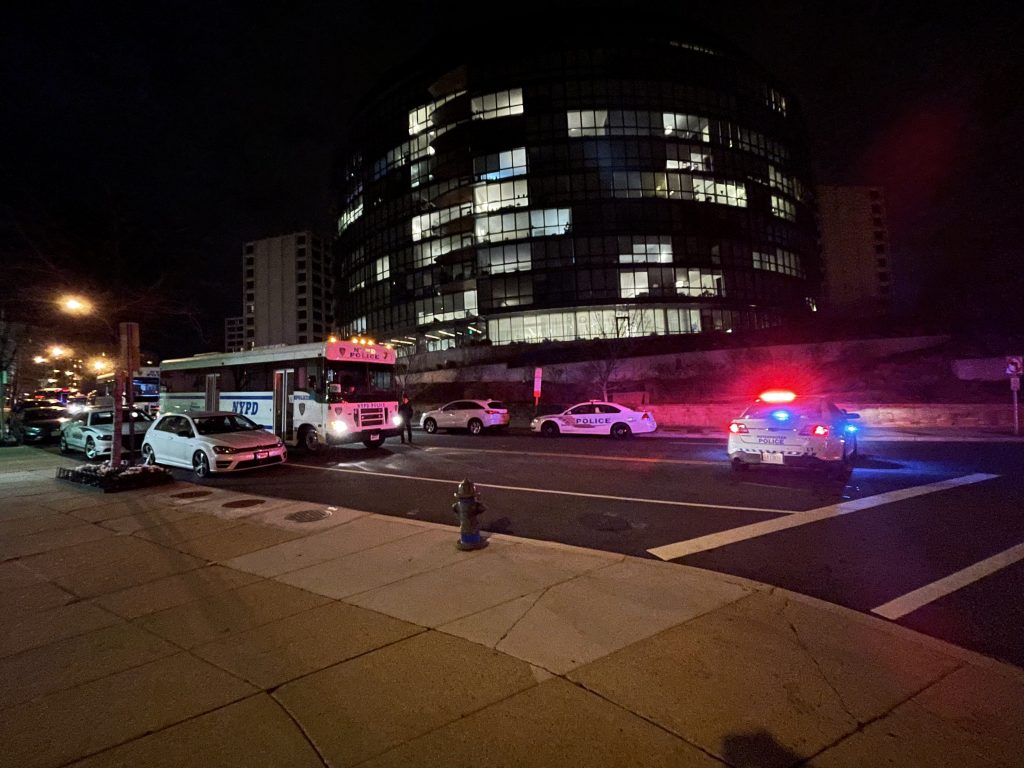
7:15 PM – Monday (Dupont Circle)
Monday night was a stark difference from Sunday afternoon as security forces grew in numbers and presence after events. In this image, NYPD forces arriving in Dupont Circle to further assist security forces. More checkpoints were set up for Tuesday and Wednesday.
4:30 PM – Tuesday (Judiciary Square) Checkpoints as residents leave work
Inauguration Eve there was the largest display of security forces that I saw after moving to D.C. over the weekend. A similar Secret Service checkpoint appeared on Sunday afternoon but a much longer line and more searches were required as residents tried to get home.
5:30 PM – Tuesday (Georgetown) Home Arrival
After a long line and road closures in the heart of D.C., I was able to make it home but much later than usual. More military personnel were in Georgetown near my residence.

6:00 PM – Tuesday (Farragut North) More Security forces move into the city.
Final Checkpoints were being set up and enforced before Wednesday’s Inauguration. Few people were out in the street. Residents were still able to travel freely with some restrictions between checkpoints and districts. Soldiers and other security forces were conversing with the locals.
6:15-8:15 PM – Tuesday (Black Lives Matters Plaza) Black Lives Matter Movement set up past security forces.
On Black Lives Matters Plaza, just two blocks from the White House., blocked off by cement barricades and road closures were demonstrators with anti-Trump and BLM signs. Although none of the supporters agreed to an interview, many were from outside of the D.C. area.
Strong language, music and signage referred to the second Impeachment of the 45th President Donald Trump, the Capitol Hill riots and Black Lives Matter. Overall, demonstrations were peaceful until a D.C. resident from the United Kingdom passed by without a mask to see the organizers. The gathering grew tense as people told him to put on a mask. Demonstrators claimed to police that he had provoked the group and had spit on one of the BLM demonstrators.
Metro police and other security forces quickly arrived and separated demonstrators from this unidentified resident, who claimed he was exercising nearby when he decided to stop by the plaza. He said he was “swarmed” and “harassed” by the demonstrators – and ended up wearing a mask. Some BLM supporters struck a conversation with the gentleman to ask what happened. an African American woman was recording on her social media and upset the resident by asking if he was a Trump supporter. Security forces cleared the area around 8:15 PM.

Wednesday – Inauguration Day
After a peaceful transition of power and an eventful few weeks, Washingtonians will finally feel a sense of normalcy soon as the security measures are broken down. However, the events leading up to the inauguration will never be forgotten. Some of the Capitol’s ways of life may change forever.
One thing is for certain: The Presidential Inauguration was different from any other Presidential inauguration in years past. Residents understood the need for such action, but at times felt frustrated with public transportation changes and road detours. Specifically, my neighborhood in Georgetown was affected. In all, I believe these were necessary steps to ensure the safety of the residents, my well-being and our nation’s values. Weeks before my move and during my short time so far in D.C. family and friends have been worried. Many locals have said to me: “Man, you chose the worst time to move here.”
Although these are unprecedented times, I lived through them and witnessed history. At some point, I will look back at this moment when I have a family of my own and share my story.
As a nation, we continue to face hardships but now we are at our strongest. Therefore, I can demonstrate how my Miami roots have prepared me for any challenge that may lie ahead.
From living near the Arlington Cemetery to hearing the fireworks from the Lincoln Memorial, I embraced what it means to be in our nation’s capital for moments like this. Hence, I understand what it means to be a Washingtonian. After reflecting on President Joseph R. Biden Jr.’s inaugural address, I felt a sense of peace and optimism for my future here in D.C.
One of many bold statements that remained with me from President Biden’s address was: “Together we shall write an American story of hope, not fear. Of unity, not division. Of light, not darkness.” I am now confident that as our government begins to shift in a new direction, I not only will have a place to call home but somewhere to make an impact in this new era under the Biden administration. Most importantly, I will always continue to have the support of FIU, family and friends.




